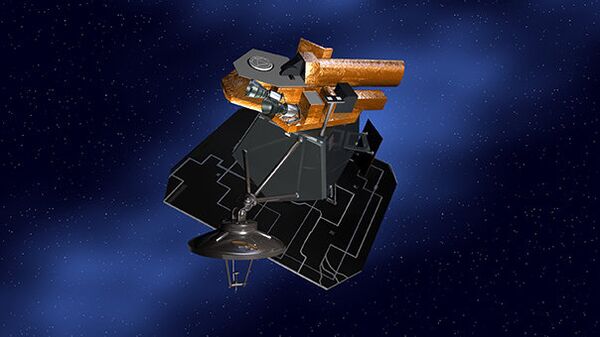WASHINGTON, September 20 (RIA Novosti) – NASA announced Friday that it had “reluctantly” halted efforts to communicate with the Deep Impact space probe, which had been exploring comets since it was launched in early 2005 but suddenly went silent six weeks ago.
“Despite this unexpected final curtain call, Deep Impact already achieved much more than ever was envisioned,” said Lindley Johnson, NASA’s program executive for the mission, in a press release.
"Deep Impact has completely overturned what we thought we knew about comets and also provided a treasure trove of additional planetary science that will be the source data of research for years to come,” he added.
Deep Impact lifted off from Florida’s Cape Canaveral on Jan. 12, 2005 and took about six months to travel to the vicinity of a comet known as Tempel 1, an estimated 268 million miles (431 million kilometers) away.
There, it achieved something that had never been done before, smashing a projectile into the comet which caused material from below its surface to be blasted into space where it was studied and photographed.
The mission was so successful that NASA kept finding new projects and different ways to use the spacecraft.
It studied other comets and made observations of different stars to confirm the motion of planets orbiting them, and took images and captured data that helped confirm the existence of water on the Moon.
Deep Impact is history's most traveled comet research mission, journeying about 4.7 billion miles (7.58 billion kilometers), beaming back 500,000 images, and allowing scientists to collect valuable information for more than eight years.
The last communication with the spacecraft was Aug. 8.
Mission controllers tried to reestablish contact but were unsuccessful. They’re still not sure why there was a loss of communications, but they uncovered a problem that could have caused the spacecraft to lose control, causing its radio antennas and solar panels to be pointed in the wrong direction.
“Deep Impact has been a fantastic, long-lasting spacecraft that has produced far more data than we had planned,” said Mike A'Hearn, an astronomy professor at the University of Maryland, which led the Deep Impact team.
He added, "It has revolutionized our understanding of comets and their activity."


